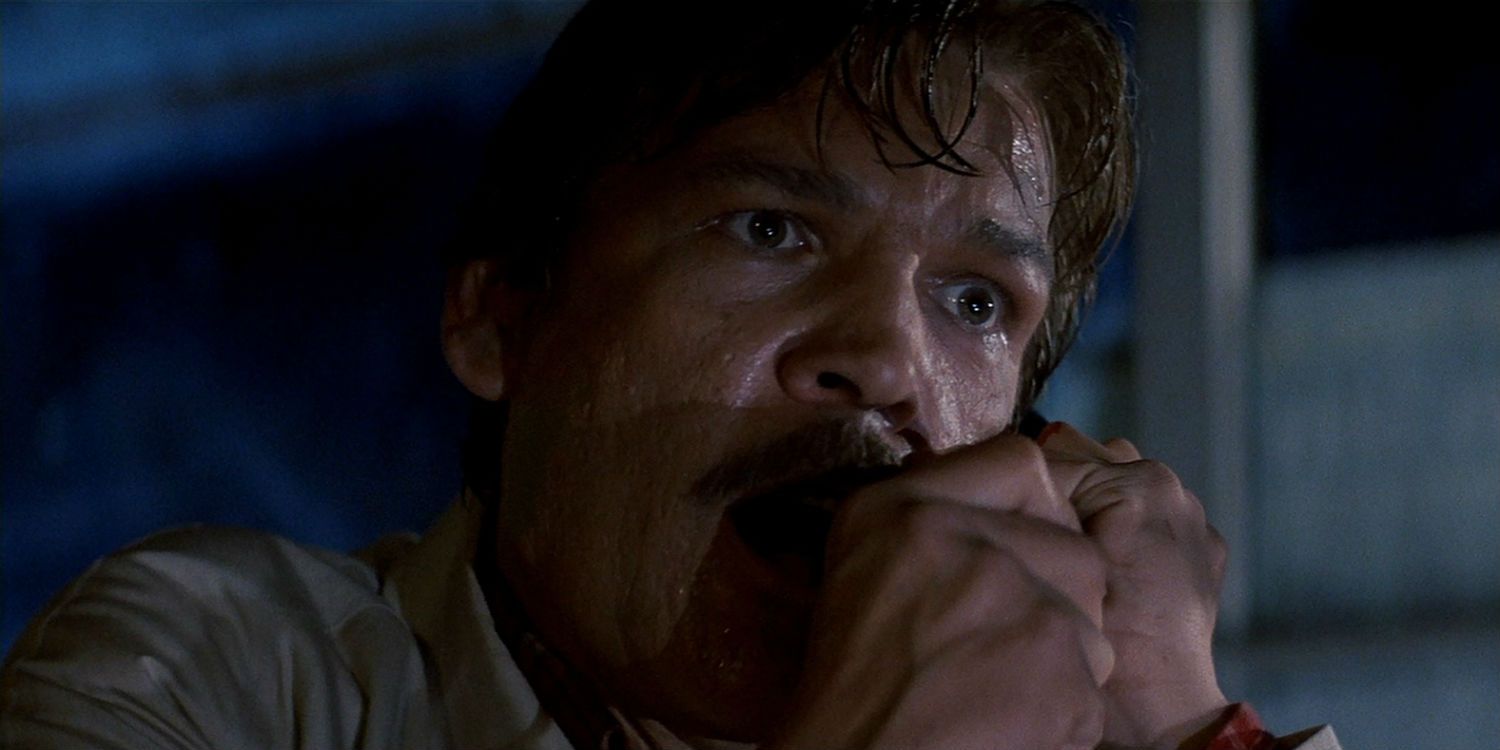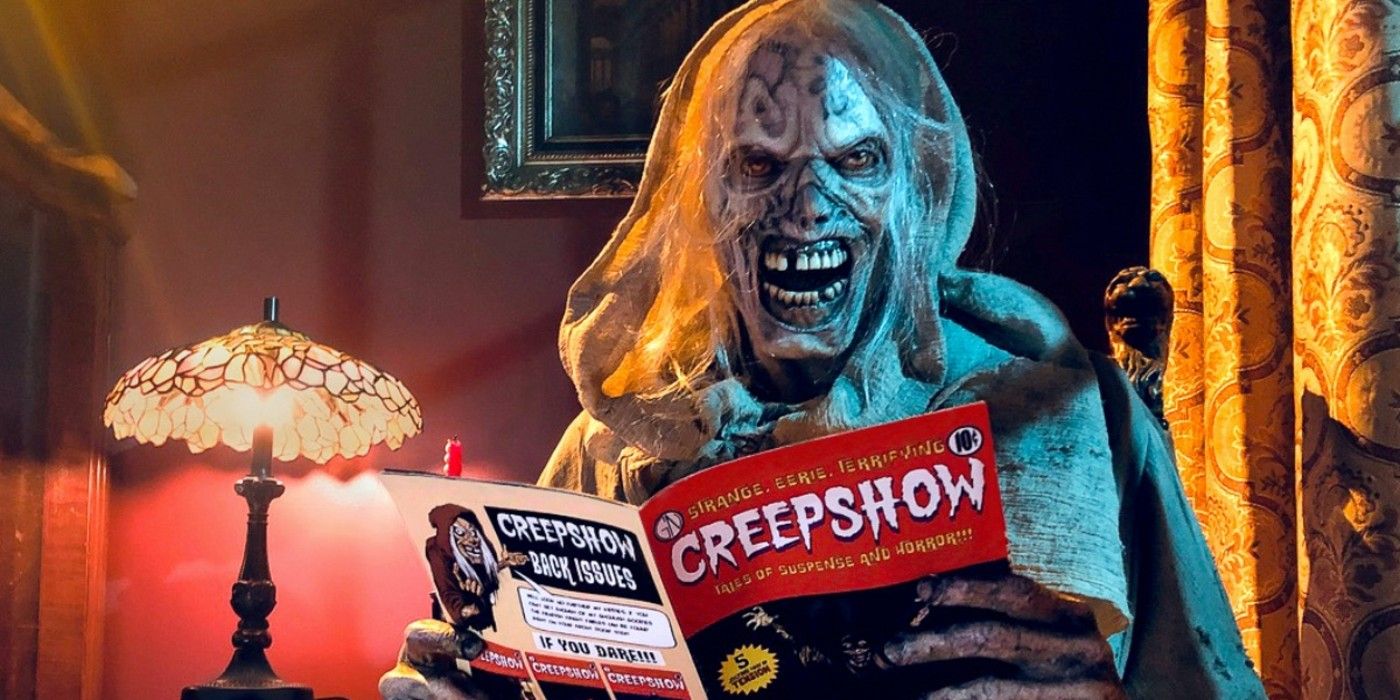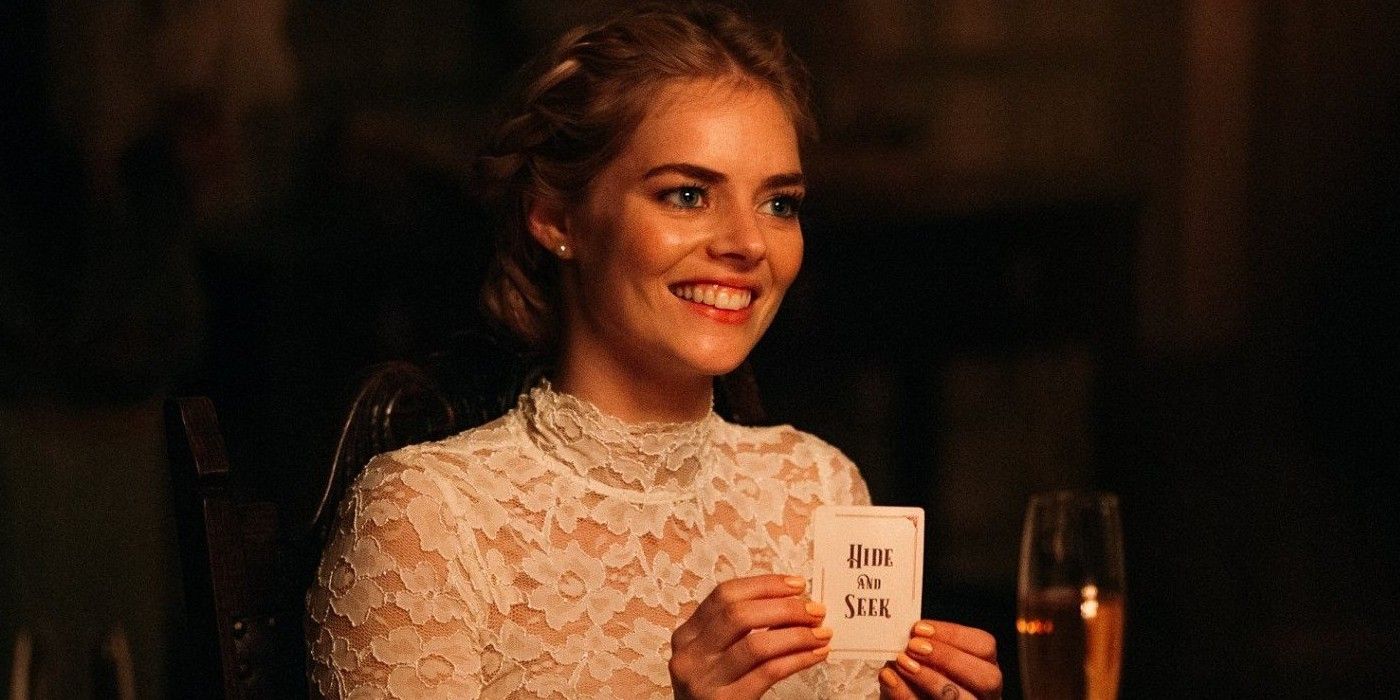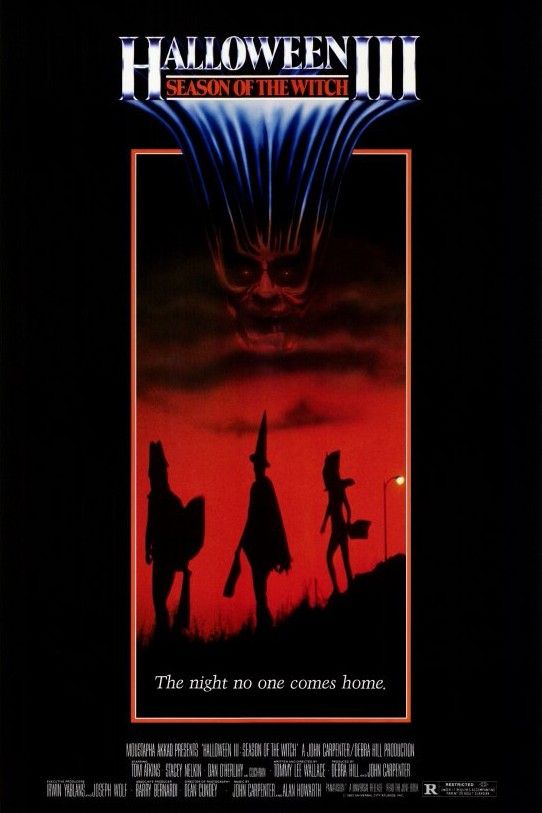The rebooted Halloween movie trilogy will soon come to a close, but if John Carpenter’s franchise embraces its anthology experiment again it can—and should—continue after Michael Myers’ story ends. Beginning in 1978 with the iconic “night that he came home“, the Halloween movies are some of horror cinema’s most enduringly popular. The franchise boasts nine sequels, a Rob Zombie reboot, and another continuity-scrapping 2018 reboot trilogy under the Blumhouse Productions umbrella. That said, not all horror fans are familiar with the original premise of the series.
When Halloween (originally titled The Babysitter Murders) proved to be a surprise smash hit upon release, the film’s producers were quick to put together a sloppy sequel in the form of the sillier, gorier Halloween II. Some of the series’ creators envisioned another path for the seasonal horror franchise, a more cohesive and interesting vision that wouldn’t have ended up incorporating the eventual druidic curses and secret siblings of the Michael Myers saga.
Carpenter and his co-producer Debra Hill proposed using the Halloween mantle to produce new, original horror movies with different premises, each of which would be united by their setting — Halloween night. The pair wanted to utilize the recognizable brand to launch an anthology series of full-length horror movies. Such an experiment had never been attempted at the time of Halloween’s release, and the fact that the sequel followed directly from the first movie narrowed its chance of success. But the real death knell for this proposal was the undeserved failure of Halloween 3: Season of the Witch. However, anthology horror is huge right now and the failed experiment was always a good idea, so there’s no reason that the creators of the new Halloween franchise need to end the series with 2022’s Halloween Ends. Instead, the producers need to do justice to Carpenter and Hill’s original vision by bringing audiences new Halloween adventures that don’t center around Michael Myers or Laurie Strode.
Halloween 3 Was An Underrated Classic

The only franchise installment that doesn’t involve masked murderer Michael Myers—1982’s Halloween 3: Season of the Witch—is an underrated outing, even winning the high praise of being amongst American Psycho author Bret Easton Ellis’ favorite horror movies. The film is a gory, surreal story of a mask-making madman who hopes to use children’s Halloween masks (along with Celtic witchcraft and a magic stone) to kill countless kids by turning their skulls into an assortment of creepy crawlies and snakes through a television ad. The cult classic Halloween 3 is an utterly insane film, and one that shows just how much creative freedom filmmakers who were handed the Halloween franchise mantle could have had in another world.
The general premise of using the Halloween franchise for various, thematically related Halloween horrors couldn’t have been put to better use than in this creepy, unsettling, and genuinely clever satirical horror. Halloween 3 has a sharp edge of anti-capitalist satire running through its bug-infested bloodstream, and makes a lot of the same criticisms of mindless consumerism that would later be featured in Carpenter’s own cult classic movie, They Live. Critics may not have been ready for it in the ’80s, but the film is a clever, thoughtful slice of Halloween horror which later influenced countless genre hits including Larry Cohen’s The Stuff (which in turn would go on to influence Stranger Things season 3). It’s hard to deny that the film’s quirky sense of humor would have fared far better with modern audiences, judging by the recent success of Jordan Peele’s darkly comedic social satire, Us. Halloween 3‘s underrated classic status proves that the format deserves another chance to shine.
Anthology Horror Movies & Shows Are More Popular Now

Perhaps the clearest reason that there has never been a better time for the Halloween franchise to branch out into telling a more diverse range of stories is the current popularity of anthology horror on both the big and small screen. When Season of the Witch was released, the movie couldn’t have arrived in cinemas at a less fortunate time. The slasher boom of the early ’80s was still in full swing, started by Halloween itself and since endlessly imitated by the likes of Friday the 13th, Madman, Just Before Dawn, and The Burning — all of which happened in 1980 and 1981 alone.
Anthology horror proved popular with audiences in the form of George A Romero’s Creepshow in 1982, but that was a single movie that featured numerous short horror stories rather than multiple, otherwise-unrelated movies being released under the same “Halloween” banner. Compare that to 2020, when anthology horror reigns supreme, and the genre is currently undergoing a revival on the small screen, the big screen, and even on phone screens. Creepshow has a successful TV reboot, American Horror Story is nearing season 10, and both The Terror and Slasher have been met with critical and commercial success. Even the bizarre, short-form streaming service Quibi’s 50 States of Fright won itself a (hopefully superior) season 2.
Meanwhile, Hulu’s Into the Dark and Amazon’s Welcome to the Blumhouse series should be the most exciting development for fans hoping the Halloween franchise might revive its old experiment with long-form anthology horror. Both series have seen their respective studios commission full-length horror movies from popular directors, and release them under their banner as a mark of quality, exactly how Carpenter and Hill envisioned the Halloween series being used way back in the mid-1980s. In fact, the Into the Dark season 1 standout, Pooka, from Timecrimes helmer Nacho Vigalondo, features some of the same anti-consumer satire that made Halloween 3’s story engaging.
Horror Satire Is More Widely Embraced

One criticism of Halloween 3, outside of its obvious lack of Michael Myers and subsequent divergence from the established narrative, was that its satirical barbs were too dark and mean-spirited for mainstream audiences. It’s a theme which recurs throughout reviews of the movie from its original release, with critics complaining that the anti-consumerist satire is clever and effective, but will be lost on crowds expecting popcorn horror. Not only is this attitude condescending toward audiences, but current trends in horror cinema also prove that it couldn’t be further from the truth.
The massive crossover success of horror satires such as Jordan Peele’s Best Picture nominated Get Out, Netflix’s 2020 release, Vampires Vs the Bronx, and 2019’s Ready Or Not, as well as the smaller scale indie successes of 2018’s Slice and 2017’s Tragedy Girls, are compelling evidence that audiences are clamoring for socially conscious, clever horror movies that engage with real-life social and cultural issues. As a result, there couldn’t be a better time for the franchise’s producers to revive this experiment and use the Halloween brand to launch some strange, satirical horror out into the world, keeping Carpenter and Hill’s legacy alive long after Michael Myers is finally dead and buried for good.
Key Release Dates

Halloween III: Season of the Witch
Release Date:1982-10-22




